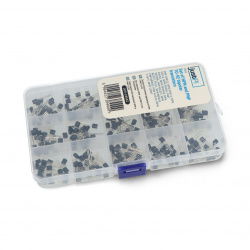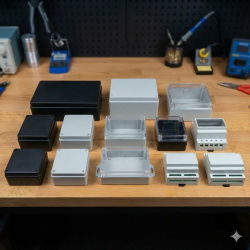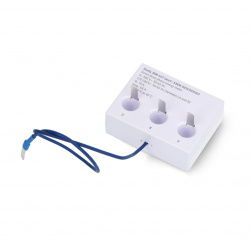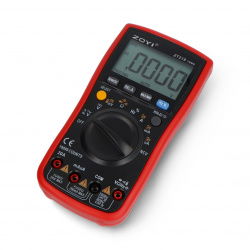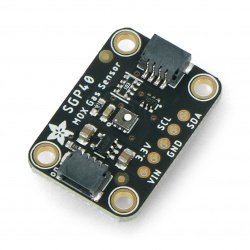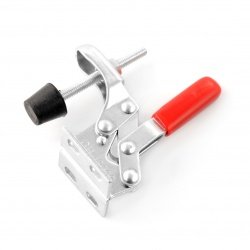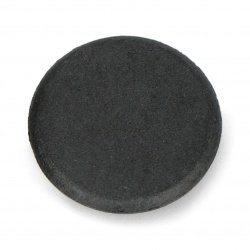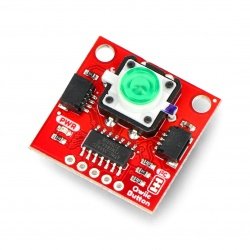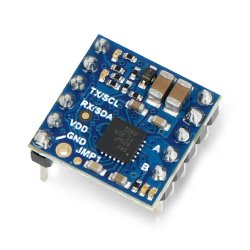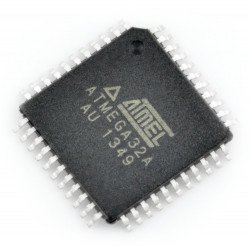- New
Gravity - sound modules
DFRobot Gravity - sound sensor - analog
Sound sensor module with analog output. Works with a supply voltage from 3.3 V to 5 V. It enables the determination of the volume or identifying characteristic sounds from the...DFRobot Gravity: Voice Recorder Module
Vioce recorder module based on ISD1820. It has a built-in microphone and a jack connector for speakers or headphones. Built-in functions allow you to record and playback audio...DFRobot Gravity - MP3 player - JQ8400-FL UART
Module that allows you to play music files directly from the 8 MB device memory . It supports MP3 and WAV formats. It communicates with the microcontroller via the UART...DFRobot Gravity - digital sound generator - buzzer
Digital buzzer module for Arduino and Raspberry Pi, which can be controlled via low and high status. When changing the frequencies of the buzzer, you can hear a different...DFRobot Gravity - analogue meter of the sound level
The sound level meter is compatible with Arduino. For measurements, it uses the circuit instrument and the microphone with a low noise level that allows to accurately measure...Gravity: Offline Language Learning Voice Recognition Sensor - I2C & UART - DFRobot SEN0539-EN
The voice recognition module - Gravity Offline Language Learning Voice Recognition Sensor - allows you to recognize 121 voice commands saved in memory, as well as expand...Gravity - Speech Synthesis Module - English and Chinese language support - DFRobot DFR0760
Speech Synthesis Module is a speech synthesis module that supports two languages - English and Chinese . It uses the I2C and UART interface to communicate with the...DFRobot Gravity - a speaker with a digital interface
The module is based on the single-wire 8002 amplifier with digital interface. It can work as a simple buzzer or play music. The volume is adjustable with built in...See also
- Gravity - starter kits
- Gravity - base hats
- Gravity - accelerometers and gyroscopes
- Gravity - actuators
- Gravity - gas & dust sensors
- Gravity - medical sensors
- Gravity - distance sensors
- Gravity - current sensors
- Gravity - temperature sensors
- Gravity - force sensors and limit switches
- Gravity - light and colour sensors
- Gravity - LED
- Gravity - encoders and potentiometers
- Gravity - converters
- Gravity - communication modules
- Gravity - relays
- Gravity - buttons, keys and joysticks
- Gravity - cables
- Gravity - displays
One, two, three...microphone test!
One of the most popular sound sensors are microphones. In the simplest terms, the principle of microphone operation consists of converting mechanical energy of a vibrating diaphragm into electrical energy, which is most frequently converted back into sound, but before it reaches the loudspeaker, it passes through a preamplifier and an amplifier. The most common designs are dynamic microphones (with a coil) and condenser microphones (with a capacitor). A special case of condenser microphone is an electret microphone, in which the role of the diaphragm is played by appropriately polarized electret foil. Electret microphones are used in numerous applications whose target or auxiliary element is the function of detection, recording or measurement of sound parameters. These applications include vibration measurement and echolocation.
Acoustic signalling
Loudspeakers are elements with which we can hear sounds transmitted to a microphone or coming from other signal sources. Loudspeakers are transducers that convert electrical signals into vibrations of a coil winding connected to a diaphragm, relative to a stationary magnet. A common type of loudspeaker, as a simple signalling element, is a buzzer - piezoelectric loudspeaker, in which the role of the coil is replaced by a piezoelectric cartridge, which is made to vibrate by time-varying electrical signal, e.g. rectangular signal with variable filling (PWM). Buzzer can be used as an element of sound effects installation in toys, as well as a warning buzzer, which, for example in the system of portable DC/AC voltage converter informs about too low voltage from the battery supplying the converter.
Record yourself!
One of the most popular hardware solutions for recording sound are voice recorders - formerly cassette recorders, nowadays more often digital with FLASH memory. In this way we can record an interview or a concert in very good quality. However, there are many applications that do not require the recording quality to be necessarily the best. Such applications include answering machines, toys and lo-fi sound effects used by many musicians. These and other similar applications can be realized using the DFRobot Gravity module built based on the specialized ISD1820 chip. This IC allows you to repeatedly write and read voice messages and various sounds. By using multi-level non-volatile memory, you can record information with a maximum duration of ten seconds, and the memory's durability allows for up to about 100,000 recordings. You can send the recorded audio information to a speaker with a maximum power of 3W and an impedance of 8Ω. Recording and reading of sound information can be carried out purely by hardware using the built-in "REC" and "PLAY" keys. (recording) and "PLAY" (playback), and also programmatically, by connecting the module to an Arduino with the uploaded program code available on the DFRobot website.






























































































































































































































































































































